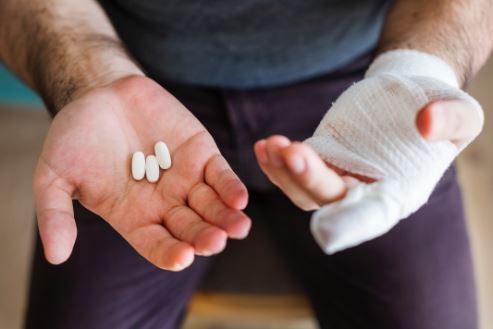Experiencing a personal injury is a distressing and life-altering event that demands immediate attention and a strategic approach. Navigating the aftermath requires a series of deliberate actions to safeguard your physical well-being and legal rights. In this comprehensive guide, we delve into each of the seven essential steps that should be taken after a personal injury, providing you with a detailed roadmap to navigate the complexities of recovery and legal processes.
Seek Medical Attention Promptly
The imperative of seeking prompt medical attention after a personal injury cannot be overstated. Regardless of the perceived severity of your injuries, consulting a healthcare professional is crucial for several reasons. Beyond ensuring a thorough assessment and proper treatment, seeking medical help promptly establishes a critical link between your injuries and the incident, providing essential documentation for potential legal proceedings. Your health is the top priority, and a comprehensive medical examination sets the foundation for a smoother recovery process.
Consult with an Experienced Personal Injury Attorney
Seeking legal counsel is a pivotal step in navigating the intricate landscape of personal injury claims. An experienced attorney serves as a knowledgeable guide, evaluating the strength of your case, and offering strategic advice on the best course of action. They act as your advocate, negotiating with insurance companies on your behalf and representing your interests in court if necessary. As seen at https://thebradleylawfirm.com/ if your case goes to trial, having a skilled and experienced attorney by your side can significantly impact the outcome. Their expertise can be a game-changer in securing the compensation you deserve for your pain, suffering, and financial losses.
Document the Scene and Gather Evidence
In the aftermath of a personal injury, the adage “a picture is worth a thousand words” holds significant weight. Documenting the scene and gathering evidence is not merely about capturing images; it’s about creating a comprehensive record that can substantiate your case. Take photographs not only of the accident site but also of your injuries and any property damage. In addition, collect contact information from witnesses who can provide crucial testimony. This meticulous documentation serves as a tangible and irrefutable account of the incident, fortifying your position when dealing with insurance companies or pursuing legal action.
Report the Incident
Reporting the incident to the appropriate authorities is a vital step in establishing an official record of the event. Depending on the nature of the incident, this may involve filing a police report. Coordinating with law enforcement ensures that your side of the story is documented and can be referenced in legal proceedings. The official report becomes a cornerstone in building a credible case, and failure to report the incident promptly may compromise your ability to file a claim later.
Notify Your Insurance Company
Initiating communication with your insurance company promptly is a crucial aspect of the post-injury process. Providing accurate and detailed information about the incident facilitates a smoother claims process. However, it’s essential to approach this communication with caution. Avoid admitting fault without consulting legal advice, as insurance companies may use such statements against you. Balancing transparency with prudence ensures that you receive fair compensation for your injuries and damages without jeopardizing your legal position.
Keep Detailed Records of Expenses
Recovery from a personal injury often comes with a myriad of expenses, from medical bills to property damage repairs. Keeping meticulous records of these expenses is more than just an administrative task; it is a critical element in building a comprehensive case for compensation. Documenting every cost, from medical treatments to prescription medications and other out-of-pocket expenses, strengthens your position and provides a clear financial picture of the impact the injury has had on your life. Thorough documentation not only aids in calculating compensation but also demonstrates the real and tangible consequences of the incident.
Be Mindful of Statute of Limitations
Understanding the statute of limitations applicable to personal injury cases in your jurisdiction is of paramount importance. Failing to file a claim within the stipulated timeframe can result in the loss of your right to seek compensation. Collaborating closely with your attorney, you must ensure that all necessary paperwork and legal actions are initiated within the specified timeframe. Proactivity in pursuing your case is a key factor in securing a favorable outcome, as time is a critical element in the legal process.
In the aftermath of a personal injury, these seven essential steps collectively form a comprehensive strategy for safeguarding your well-being and navigating the legal intricacies of recovery. Prioritizing your health, meticulous documentation, cooperation with authorities, and seeking professional guidance are the cornerstones of a successful post-injury journey. By following these steps diligently, you empower yourself to not only overcome the immediate challenges but also to build a solid foundation for a smoother recovery and a fair resolution to your personal injury case. Always remember, taking decisive action now is the first step towards reclaiming control over your life after a personal injury.


